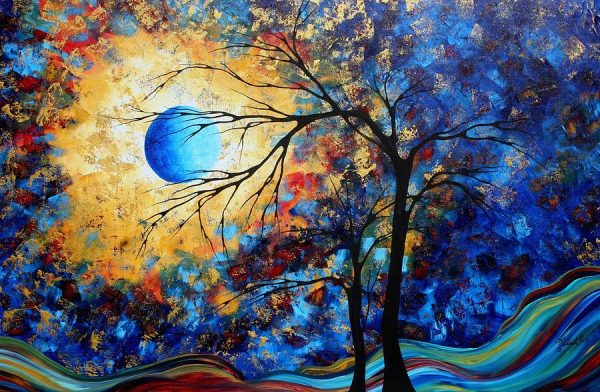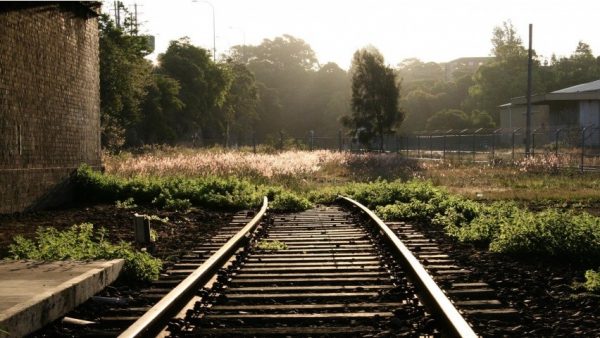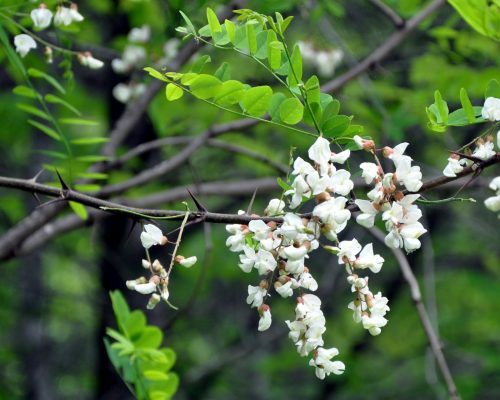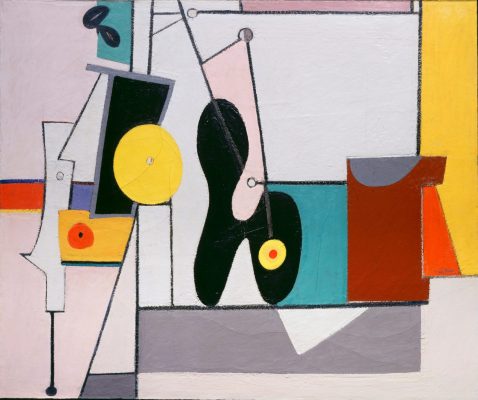The following conversation was held at the Institute of Contemporary Arts, London, in May 2012. The event took place almost a year after a performance by the collective JocJonJosch titled Existere at TestBed1, an experimental art space in Battersea, and coincided with the publication of a limited edition artist’s book which sought to engage with the ideas raised by the performance – questions of eroticism, corporeality, collectivity and memory. JocJonJosch had decided not to document the performance photographically, preferring to engage with its mnemonic and imagined remnants.
Writers and artists were invited to contribute impressions, essays or artworks, in the hope that these would provide an alternative form of documentation to the photographic image. What follows also forms part of this fallout, though the aim was to move beyond Existere and to situate some of JocJonJosch’s strategies within the broader context of performance art, particularly in relation to the problems encountered in its documentation. The conversation has been edited but a full transcript can be found here.
A brief introductory note on the speakers. Jo Melvin is a curator, art historian and lecturer. Recently she has collaborated on the Barry Flanagan exhibition at Tate Britain (2011) and worked on the important retrospective of the polish artist Tadeusz Kantor at the Sainsbury Centre in East Anglia (2009). David Gothard is a theatre director and former artistic director of Riverside Studios, where he worked closely with Joan Miró, Shuji Tereyama, Samuel Beckett and Tadeusz Kantor, among others. John James is a poet and collector. His Collected Poems were published by Salt Publishing in 2002. His most recent collection, Cloud Breaking Sun, was published by Oystercatcher Press in 2012. Rye Dag Holmboe is a writer and PhD candidate at University College, London.
RYE DAG HOLMBOE: I wanted to start the discussion with an idea that leads on from Existere. Jo, I was wondering if you could talk a little about the strategy JocJonJosch deployed, particularly in relation to the question of memory, and discuss how it may relate to documenting performance art more generally. Perhaps you could give us some precedents to the collective’s ideas?
JO MELVIN: Yes. Something that I find relevant and vital about the decision not to allow any photographic documentation is the way in which it places the emphasis on our senses. You become more aware of the artwork’s perceptual duration as it is received through sight, sound and smell. That little book by John Berger, Ways of Seeing, remains relevant. It’s a seminal text. He begins with the idea that seeing precedes words. The child looks and recognises before it can speak. This immediately sets up a displacement between observation and the articulation of that observation. But I think it also undoes the self-evidence of the photographic document, which is also a kind of text. Not having a visual referent allows for other forms of articulation.
The way a narrative – the recounting of a performance – enters discourse is also interesting. Take the American artist and photographer Bill Beckley’s first performance. His intention was to cross the Delaware with a series of paint pots which he would use to paint a line across the river. He took a camera with him to document the event. Half way across he realised the tide was too strong so he dropped everything, including the camera. He made it safely to the other side and, as it turns out, he discovered that he had come upon the place where George Washington had crossed the Delaware.
Without any visual documentation Beckley’s telling of the event became the event. And each retelling resituates that event, reconstitutes it.
RDH: There are two points there. First, we have a kind of archive of a non-event, at least insofar as the event itself never really took place. Second, we have the issue of narrative. In relation to the second point, do you think there is a way in which not documenting a work or performance photographically can be understood, not as a loss, but as a gain, since it allows for a plurality of narratives to emerge as opposed to one, which might be defined purely by the image.
JM: Absolutely. If there is an overreliance on the image then there is sometimes the danger that it is viewed as a true, singular representation of the event. That is not always the case, of course, but I do think that refusing photography opens up many possibilities.
RDH: In relation to Bill Beckley, there is a sense in which failing and making a non-event the event plays on the idea that meaning can be generated in and through moments of silence, in lacunas or in moments of failure. I know these ideas interest you. Could you develop them?
JM: Yes, absolutely. I think something very particular about silence in the encounter with the art object. There is often an embarrassment at silence, an embarrassment which generates chatter, or generates too fast a response in order to fill that space rather than allow it to exist. This space is necessary for us to experience our anxieties, our uncertainties, our feelings of doubt, our feelings of ambiguity. To allow for that unhingedness is a very affirmative thing. Silence should be celebrated.
RDH: Do you think this can be related back to the technical side of things? Adorno once wrote about the dangers of recording classical music. He was concerned with the way in which a recording ironed out the tensions of a live performance. For him it meant losing that sense of contingency and chance that made life life. Do you think there is a problem with photographic documentation and the production of a kind of seamless reality?
JM: Absolutely. You can end up with too much perfection, as though there were no space for anything outside the planned – a mistake, a minor variation, an error, a difficulty, a grunt in a performance. If a work is recorded from a particular angle, the work becomes fixed. Everything else is edited out.
DAVID GOTHARD: It is also about quality. I’ve sat at a table with Pierre Boulez discussing this. We went round the twentieth century composers, all of whom, including electronic composers, had difficulties with their equipment. It has to do with the quality of the sound. It ties up with what we are talking about in that, at the end of the day, there is something in live performance that you cannot capture. That is what you would die for. If you really care about the subject, you reject rather than compromise.
RDH: How did the artists you have worked with – Samuel Beckett, Tadeusz Kantor, among others – deal with the problem of recording performance?
DG: Tadeusz Kantor would cut through the crap, stand up [DG stands up] and have you all look at him. He would maintain such a discipline over you, and that would create a certain mood. An individual leaves the chorus and, to everybody’s horror, he speaks alone. There is such a tension in the room when it happens that it produces a sense in which this is the first time it has happened. One of Kantor’s clear statements is that every performance must appear to be the first.
JM: It’s never repeated.
DG: It’s never repeated, and you’re all agog. The director’s job is to transcend like a conductor, to give an experience that will go somewhere you cannot define.
RDH: And that experiential quality is always lost, whatever the archival document. But if you were to reactivate the archival material, what is there to be gained? The loss of the experiential is almost a given. But what do you think can be gained from reactivating the archive?
DG: Listen, its an ongoing dialogue. You always need to produce that je ne sais quoi in the room that a photograph probably doesn’t get, but a great photographer might. But there is a danger of bad art being photogenic and decorative, like German theatre was in the Seventies. You could have wonderful magazines but the work was shit. That’s a journalistic talent rather than an artistic one.
With performance there will always be a gap. Archive fills some of these gaps. But my experience of archive is that you have a terrible emotional relationship with it and, periodically, you just want to burn the whole lot because of its inadequacy. It’s a love/hate relationship.
When you are a director of stage performance you never have anything to show apart from an out of date video and a handful of photographs. It’s sad.
RDH: I like what you said about the dangers of a photograph being photogenic. I wonder if, at this point, there might be a way of linking this to the relation between the visual and the textual, and to try and shift the emphasis away from what is lost when documenting performance art photographically to what may be gained when using other media. John, some of your poetry is ‘about’ artwork. There are poems that you have written about Barry Flanagan’s works, for example, that in their very form seem to emulate the form of some of his artworks, but without ever being illustrative. If so much is lost of the experiential quality of an artwork when you see it in a ‘photogenic photograph’, to use David’s words, what do you feel, as a poet, can be gained or recovered in the form of a poem?
JOHN JAMES: Well, it’s interesting that you raise that issue because it chimes with something that struck me about Jo’s contribution. She was talking about the way in which a performance that goes undocumented sometimes lives on in a more vital way than if it were simply recorded in a photograph or video. That made me think about repetition. Not simply in the sense of the same thing being done again in exactly the same way, but the kind of repetition which takes the form of an echo, an echo which doesn’t exactly reproduce what happened the first time, either in terms of what was said, or in terms of what was written, or in terms of what was done in the performance, but an echo that repeats differently. This can be related to memory and the trace. I’m interested in the idea of poetry as being more concerned with a trace than a definitive statement about anything, in poetry which alludes almost unsuccessfully to something other than what is set on the page. It’s like what Jo was talking about: the possibility of having some kind of return of the work in a variety of shapes and forms and echoes, stutterings almost. This interests me immensely, particularly in relation to the concept of memory. Memory is a means of hanging on. Not of hanging on in a way that simply reifies that which is being remembered, but a hanging on that includes other people’s engagements with what happened.
In relation to the specific aspects of your question – making work in relation to an artwork or art practice – for me the works that I have made tend to engage with the process of making more than the finished work. That interests me enormously because you can engage with the artwork by producing an echoic effect without necessarily describing the artwork or turning it into some kind of fixed object.
RDH: So it’s very much to do with form and formation as opposed to the content of the poem?
JJ: Absolutely, yes. We spoke earlier about my poem and its relation to one of Barry Flanagan’s early works. The form of the poem takes it’s structure from the form of the Flanagan piece.
JM: There is a line in your 1969 poem about Barry Flanagan which says that the rope demolishes its own presence. For me this description is much closer to the reality of a rope than a photograph of a rope could ever be.
DG: That spirit of something is often lost in texts. You barely ever find it in a book, though the great example in the twentieth century is the role of smell in Proust. It’s strange. When you want to capture something you tend to create definitions. But the whole point of the subject is that it will elude you. It will go around in a circle and hit you in the face in a moment of sheer madness.
The avant-garde are perpetually searching for these moments. I’m thinking of David Weiss and the like, or Filko and Koller in Slovakia, who produced the anti-happening, the anti-performance, reducing an event to a scrap of paper and a diagram.
RDH: I like that idea of a performance being reduced to a scrap of paper. Jo, do you think this may be linked to the so-called ‘dematerialisation’ of the artwork?
JM: Well yes. The thing that came over very strongly while David was talking was this notion of exchange. A kind of handshake between artists, between generations, between countries and between pupils. And the exchange of contacts and the exchange of ideas, and the exchange between poetry and representation, an exchange that is absolutely essential. It made me think of the work of Robert Barry that was here at the ICA in 1969 in the When Attitudes Become Form exhibition. At the top of a piece of paper there was a line which said ‘all the things that I know of which I am not at the moment thinking’. In this line there is a gift: the possibility of everything that isn’t denoted to be denoted. And I think that the reduction of a performance to some small diagram is like a portal to all possible future exchanges. We could also think of these exchanges as future translations.
DG: I’m very fond of the fact that Samuel Beckett seriously believed he’d not been born. He was always searching. The performance of Existere sought to explore something that exceeds our grasp. But the moment you give it a strictly defined answer you are fucking the whole thing up.
JJ: I can’t stop thinking about a magazine that was being produced in the late Sixties and early Seventies called the English Intelligencer. It comprised a few mimeograph sheets stapled together and distributed to a small group of people over a period of about 18 months. It hardly exists anymore because so many copies have disappeared in people’s dustbins, but it has been archived in some libraries. It now has cult value. It has been fetishized. Just recently, this year in fact, somebody has brought out a collection of the prose pieces from the journal, which include my own work. It is called Certain Prose of the English Intelligencer, edited by Neil Pattison. It’s nice to have an object you can hold. But it can never represent the exchanges that went on around those sheets, in between their production and amongst people who met informally without ever thinking at the time that important stuff was going on. In my memory’s peripheral vision that time is golden.
But the point I’m driving towards is that there are exchanges of the kind that David has been talking about which simply cannot be captured. But they can be carried forward in other activities. In the last couple of lines of the introduction to Certain Prose somebody quotes me as saying: ‘it depends what you do with it’. To which the guy writing says: ‘and we’re not through with doing it, we’re going to go on doing it, we’re going to go on echoing what we’ve done before and we’re going to go on repeating it but not in the same way.’ So we almost have a loving repetition of what we are seeking to arrive at but never do arrive at.
DG: We are looking at the work of a world where graduates are being trained to earn money. I think this issue is very relevant. Brilliant people end up doing rock videos. The question is: how do you get them to stay on the pathway of being artists?
You know, it’s a quest that we’re all on. I’m a veteran of Sony paying for Peter Greenaway and David Byrne to explore digital so that they could perfect digital. This is arguably an area of thinking that shouldn’t be lost as we all struggle to be metaphysical over holes.
Of course that is what Margaret Thatcher never understood about the Sixties, nor Tony Blair or any politician, which is that the amount of time Vivienne Westwood sat around smoking dope is exactly what makes her a pillar of our economy. Which is to repeat the point. The degree to which you can explore whatever is new is both technological and internal, as it were.
I think, quite healthily, we have jumped from the metaphysical into something that society, colleges and so on and so forth have got to hit. They are going the wrong way about generating creativity. The more you polish up the educational system the less chance you have of the giants of the Sixties.
RDH: John, I’d like to return to the idea of the trace before we finish. At an almost technical level, how do you elaborate the trace in your poems?
JJ: Well at a technical level I am a bit OCD about the autonomy of the line. The poem itself has it’s own autonomy, of course. Once it’s done with it’s gone, it’s moving out, there is a whirl of people reading it and receiving it. But each line also has it’s own autonomy. What I like to do, as a deliberately self-reflexive technique, is to echo a previous line from a previous work in a new work. But the line won’t be an exact repetition of the previous line, it will be a half echo of it perhaps. For the reader familiar with the preceding body of work the echo will suddenly strike.
RDH: A sort of return of the repressed.
JJ: Certainly a return. But a return which evokes a kind of response where you get the impression that this might return again, at some future point, a future which has not yet arrived.
A full transcript of this discussion is available on the JocJonJosch website here. Enquiries about the book can be made to info@jocjonjosch.com.




